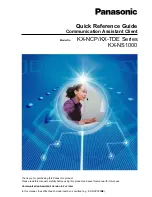
©Eastman Kodak Company, 2007
November 2007
•
H-1-5219t
TECHNICAL DATA /
COLOR NEGATIVE FILM
KODAK VISION3 500T Color
Negative Film 5219 / 7219 / SO-219
The first in a new family of films, VISION3 500T Film gives
you more control and flexibility at every phase of the
filmmaking process—from capture through post, in both
digital and traditional workflows.
VISION3 500T Film retains the overall look and image
structure of KODAK VISION2 Films—then adds technical
innovations that provide improved exposure latitude—at
both ends of the curve. Proprietary, advanced Dye Layering
Technology (DLT) gives you noticeably reduced grain in
shadows, so you can shoot at higher speeds, with less light,
in darker corners, and know you can capture an amazing
amount of shadow detail with noticeably lower grain.
VISION3 500T Film also features extended highlight
latitude, so you can follow the action into bright light-in a
single shot-without worrying about blown-out details.
When the film is scanned and digitized, you'll find you can
recover two stops of highlight detail. This technology is
enabled by the use of sub-micron imaging sensors.
VISION3 500T Film fits seamlessly into your digital
workflow. And when scanning low-light scenes, VISION3
500T Film yields higher signal-to-noise ratios for
unprecedented image quality.
BASE
KODAK VISION3 500T Color Negative Films 5219 and
7219 have an acetate safety base with rem-jet backing.
KODAK VISION3 500T Color Negative Film SO-219 has
an ESTAR Safety Base with rem-jet backing
STORAGE
Store unexposed film at 13
°
C (55
°
F) or lower. For extended
storage, store at -18
°
C (0
°
F) or lower. Process exposed film
promptly. Store processed film according to the
recommendations in ANSI/PIMA IT9.11-1998: for
medium-term storage (minimum of ten years), store at
10
°
C (50
°
F) or lower at a relative humidity of 20 to 30
percent; for extended-term storage (for preservation of
material having permanent value), store at 2
°
C (35
°
F) or
lower at a relative humidity of 20 to 30 percent. For active
use, store at 25
°
C (77
°
F) or lower, at a relative humidity of
50 +/- 5 percent. This relates to optimized film handling
rather than preservation; static, dust-attraction and
curl-related problems are generally minimized at the
higher relative humidity. After usage, the film should be
returned to the appropriate medium- or long-term storage
conditions as soon as possible.
For more information about medium- and long-term
storage, see ANSI/PIMA IT9.11-1998, SMPTE RP131-2002,
and KODAK Publications No. H-1,
KODAK Motion Picture
Film
and No. H-23,
The Book of Film Care
.
EXPOSURE INDEXES
Tungsten (3200K) - 500 Daylight
1
- 320
Use these indexes with incident- or reflected-light
exposure meters and cameras marked for ISO or ASA
speeds or exposure indexes. These indexes apply for meter
readings of average subjects made from the camera
position or for readings made from a gray card of
18-percent reflectance held close to and in front of the
subject. For unusually light- or dark-colored subjects,
decrease or increase the exposure indicated by the meter
accordingly.
COLOR BALANCE
These films are balanced for exposure with tungsten
illumination (3200K). You can also expose them with
tungsten lamps that have slightly higher or lower color
temperatures (+/- 150K) without correction filters, since
final color balancing can be done in printing. For other light
sources, use the correction filters in the table below.
*
These are approximate corrections only. Make final corrections during
printing.
†
These are starting-point recommendations for trial exposures. If the kind of
lamp is unknown, a KODAK Color Compensating Filter CC 40R can be used
with an exposure index (EI) of 250.
Note:
Consult the manufacturer of high-intensity
ultraviolet lamps for safety information on ultraviolet
radiation and ozone generation.
1. With a KODAK WRATTEN Gelatin Filter No. 85.
Light Source
KODAK Filters
on Camera
*
Exposure
Index
Tungsten (3000 K)
WRATTEN Gelatin No.
82B
320
Tungsten (3200 K)
None
500
Tungsten photoflood
(3400 K)
None
500
Daylight (5500 K)
WRATTEN Gelatin No. 85
320
White-Flame Arcs
WRATTEN Gelatin No.
85B
200
Yellow-Flame Arcs
Color Compensating 20Y
320
OPTIMA 32
None
500
VITALITE
WRATTEN Gelatin No. 85
320
Fluorescent, Cool
White
†
WRATTEN Gelatin No. 85
+ 10M
200
Fluorescent, Deluxe
Cool White
†
WRATTEN Gelatin No.
85C + 10R
320
Metal Halide
WRATTEN Gelatin No. 85
320
























